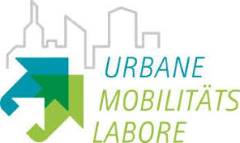 |
||||||||
|
||||||||
 |
 |
 |
 |
 |
 |
 |
||


Dear reader, To build a framework for a digital, clean, service-oriented and affordable mobility system ensures that mobility is kept ‘on the move’ and serves both users of the mobility system and economic value creation. Living Labs provide the ideal framework for a joint development of future innovations in the interplay of research, business and the civil society. We hope that with this EPOMM e-update we are able to provide you with inspiration and insights on Living Labs, and co-creation and user involvement as its key success factors. | |||||||||||||||||||||
Living Labs place citizens at the centre of innovation |
|||||||||||||||||||||
According to the European Network of Living Labs (ENoLL), Living Labs are defined as “user-centred, open innovation ecosystems based on a systematic user co-creation approach integrating research and innovation processes in real life communities and settings”. To place citizens at the centre of innovation, five key elements form a Living Labs:
| |||||||||||||||||||||
Living Labs vs Traditional Projects |
|||||||||||||||||||||
Living Labs bring certain management challenges in relation to traditional projects. To achieve the benefits of the Living Labs approach, participants should be aware of these differences and adjust their actions and roles accordingly. The following table should help to distinguish between the traditional project model and the living lab model (Reproduced from Westerlund & Leminen, 2011 | Source: https://timreview.ca).
| |||||||||||||||||||||
From research to real world in Austria |
|||||||||||||||||||||
Various national funding programmes in Austria are based on the Living Labs and Open Innovations 2.0 approaches. In the context of mobility, these programmes pursue strategic objectives, such as the development of new solutions through research, technology and innovation for a safe, environmentally friendly, social and efficient transport system. As part of the Urban Mobility Labs initiative, operators, themes and networks have been identified that support the establishment and operation of several ‘supporting structures’ for mobility and transport-related RTIs (research, technology and innovation) and thus promote the mentioned potential benefits for Austria. The five projects aspern.mobil LAB (Vienna), MOBILITY LAB (Graz), MobiLab OÖ (Linz/Steyr), Thinkport VIENNA (Vienna), and UML Salzburg (Salzburg) were selected for funding (information in German only). | |||||||||||||||||||||
A Living Lab Cluster in the Walloon region |
|||||||||||||||||||||
Living Labs in Wallonia is an initiative of Creative Wallonia that brings together and supports Walloon Living Labs to share a vision and pursue missions of economic, social and societal development by integrating the user at the heart of the innovation process. The mission of Living Labs in Wallonia are to:
Based on the experience of Walloon Living Labs and exchanges and collaborations with the actors of open innovation and the creative economy around the world, Living Labs in Wallonia aims to define and share an open methodology of Walloon Living Lab. This open methodology is broken down into different work streams related to research, analysis, exchange of experience and co-creation. All these activities are organised in order to make the results exploitable by others in an open and collaborative way. | |||||||||||||||||||||
Lyon fosters dialogue and co-design |
|||||||||||||||||||||
Lyon is on its way to becoming an innovative, sustainable and dynamic smart city. By participating in the Smarter Together project, Lyon aims, among other things, to redevelop over 500 buildings, to develop photovoltaic power plants, to reduce the use of conventional cars, to develop a data platform to monitor energy production and energy consumption, and to improve the quality of life of its residents. The exhibition hall ‘Maison de la Confluence’ deals with all these topics. Lyon’s ambition is to engage citizens and stakeholders in the dialogue and co-design of a sustainable neighbourhood, as well as the smart use of technology. Therefore, the laboratory was designed as an exhibition hall that hosts the process of involving citizens and stakeholders. | |||||||||||||||||||||
Munich and the magic figure |
|||||||||||||||||||||
In addition to Lyon, Munich is one of the lighthouse cities in the Smarter Together project. Munich is developing and testing innovative technologies and solutions as part of its Smart City framework strategy. The magic figure for Munich is ‘20’: The measures of the Munich Smarter Together implementation should save more than 20 percent CO2, more than 20 percent renewable energy should be used and energy efficiency should be increased by more than 20 percent. By 2050, Munich wants to achieve CO2 neutrality in the project area. The ‘Stadtteillabor’ serves as a venue, exhibition space and civic centre. It is the linchpin for the public participation process. Open consultation hours for residents and other interested parties take place three days a week. | |||||||||||||||||||||
CIVITAS 2020 unites 16 Living Labs |
|||||||||||||||||||||
Since it was launched by the European Commission in 2002, the CIVITAS Initiative has tested and implemented over 800 measures and urban transport solutions as part of demonstration projects in more than 80 Living Lab cities Europe-wide. Since 2016, three CIVITAS Horizon 2020 projects unite 16 Living Labs. The five Living Labs in CIVITAS PORTIS, Aberdeen, Antwerp, Constanta, Klaipeda and Trieste, implement mobility measures, supporting their multifunctional role of cities, ports and gateways to inland areas. The project aims to show that sustainable mobility can increase functional and social cohesion between city centres and ports, while pushing the economy forward and boosting the allure of modern urban environments. CIVITAS DESTINATIONS and its Living Labs in Elba, Las Palmas de Gran Canaria, Limassol, Madeira, Rethymno and the Valletta Region builds up an integrated approach to address mobility and tourism, testing balanced strategies to face the rising challenges of these two growing sectors and to achieve sustainable development and a better quality of life. Within CIVITAS ECCENTRIC, the five Living Labs Madrid, Munich, Ruse, Stockholm and Turku focus on sustainable mobility in suburban districts and innovative urban freight logistics, two important areas that have previously received less attention in urban mobility policies. | |||||||||||||||||||||
In Vienna, a bus functions as urban living lab |
|||||||||||||||||||||
The third Lighthouse city in the Smarter Together project is Vienna. The Viennese project area is located in the district of Simmering (population 21,000). District residents will benefit from smart project solutions within the fields of refurbishment, energy, mobility and information and communication technologies. There’s a strong emphasis on dialogue, in line with the Vienna Smart City Framework Strategy where the human dimension of the Smart City is the focus of attention. The ‘SIMmobil’ is a mobile information and participation laboratory used in public areas to communicate and inform residents of the target area. Other specific target groups include students, local business people, social and cultural initiatives, as well as representatives of institutions, local policymakers and opinion leaders. | |||||||||||||||||||||
Conclusion: An emerging open innovation approach |
|||||||||||||||||||||
Living Labs support the creation of novel, experimental environments in which innovative mobility and transport solutions are shared with citizens, politics, administration and industry representatives. This framework has the potential to significantly increase research, technology and innovation in terms of both efficiency and effectiveness. Key areas for the Living Lab approach are those with high resource and energy efficiency potential, such as mobility. Living Labs enable companies, households, governments and governmental organisations to develop solutions for increasing resource-efficient systems. Understanding the systemic effects of stand-alone solutions is one of the greatest challenges of current applied sustainability research and thus an important argument for the need of a Living Lab infrastructure to promote sustainable development. Living Labs for sustainable development offer a great potential to integrate sustainability aspects into the development of new technologies, products and services. Innovation- and application-oriented research and development should use the Living Lab approach in order to combine technical and non-technical perspectives and to better anchor sustainability in the research and innovation system. “Remember the two benefits of failure. First, if you do fail, you learn what does not work. Second, the failure gives you the opportunity to try a new approach.” - Roger von Oech | |||||||||||||||||||||
Upcoming events |
|||||||||||||||||||||
For more events, please visit the EPOMM calendar. | |||||||||||||||||||||

 |
 |
 |
 |
 |
 |
 |







